This week we hark back to the days before NHS patient records and find out how illnesses in ancient Rome, Victorian London and 17th century Italy were treated. We also explore how the modern history of medicine is being recorded as it happens and how methods used to track DNA mutations can be used to the trace the evolution of ancient manuscripts.
In this episode
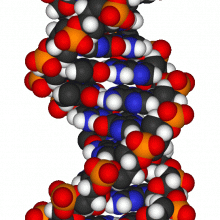
It’s Alive – Artificial DNA
Scientists have turned the basic structure of DNA on its head: taking it from 4 bases to 12.
This 12 base system has already been implemented in developing new forms of personalised medicine but now the researchers want to see if this more complex DNA can be self-sustaining.
Fifty-six years ago, Watson and Crick described DNA as containing base pairs made up of adenine, thymine, guanine and cytosine or A-T-G and C.
As far as we know, all DNA on Earth uses only these four bases (before methylation) and RNA uses uracil in place of thymine. But now Steve Benner, and colleagues from Florida, have re-written these rules and his group are testing a system that uses eight more bases.
They hope the research will shed light on how life started on Earth, by producing a self-sustaining molecule capable of Darwinian evolution and reproduction. And it's similar to the one that is thought to have appeared on Earth nearly four billion years ago.
At the American Chemical Society meeting this week, Benner described his ultimate goal to synthesize a similar molecule in his lab at the Foundation for Applied Molecular Evolution. His 12 letter genetic system is capable of nearly all of the actions that define a living thing -- reproduction, growth and response to its environment.
"But it still isn't self-sustaining," Benner explained. "You need a graduate or post-doc to come in the morning and feed it. It doesn't look for its own food. No one has gotten that first step to work. If you start making estimates of how many molecules you have to look for in order to find one that does this, you're talking about 1 x 10^34 molecules."
It sounds like something from the X-files, but one day they may grow their very own alien DNA molecule in the lab.
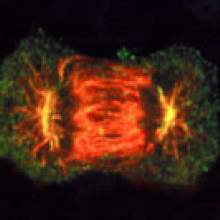
Test to Identify Relatives at Risk
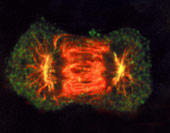 The key to treating cancer successfully is catching it as early as possible. This is particularly true in the case of bowel cancer, where around eight out of ten people will survive if their cancer is caught at an early stage, but sadly only about one in ten cancers are actually caught this early.
The key to treating cancer successfully is catching it as early as possible. This is particularly true in the case of bowel cancer, where around eight out of ten people will survive if their cancer is caught at an early stage, but sadly only about one in ten cancers are actually caught this early.
We already know from research that having a family history of bowel cancer increases the risk of developing the disease yourself - for example, just having one first degree relative with the disease can double your risk - that's a parent, sibling or child. And if they were diagnosed young, under the age of 45, this increases your own chances even more.
Previous research has suggested that offering colonoscopy screening people from families with a strong family history of bowel cancer could help to save lives. But it's not practically possible to screen everyone with one relative with the disease.
Now research from Cancer Research UK-funded scientists at the Institute of Cancer Research in Surrey has shown that a simple test could help to identify people with bowel cancer whose immediate relatives are at highest risk of developing the disease.
The scientists studied DNA in tumour samples taken from nearly 3,000 people with bowel cancer. They were looking for signs of microsatellite instability, which is basically messed-up DNA. This happens when there are faults in genes that repair DNA.
The researchers found that first degree relatives of patients whose tumours showed microsatellite instability were much more likely - up to twenty times more - to develop cancer themselves than relatives of patients whose tumours didn't show the instability, particularly if the patient developed cancer under the age of 45.
Overall, the scientists suggest that it would be worth screening people from the age of 25 from families where someone young develops bowel cancer with microsatellite instability. But people related to patients whose tumours don't have microsatellite instability wouldn't need screening from such a young age. This would help to target stretched screening resources to people at greatest risk, and also help to avoid having to screen people unnecessarily.
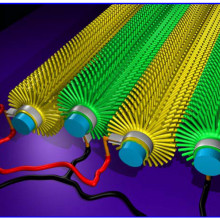
Truly Juicy Couture
Charging your mobile phone could be done just by waving your arms and legs about a bit, according to scientists in the US. Zhong Lin Wang and colleagues have used millions of nanowires made from zinc oxide to generate electric currents from simple body movements, such as walking or even the flow of blood around your body. And the researchers say this technology could negate the need for batteries in the future.
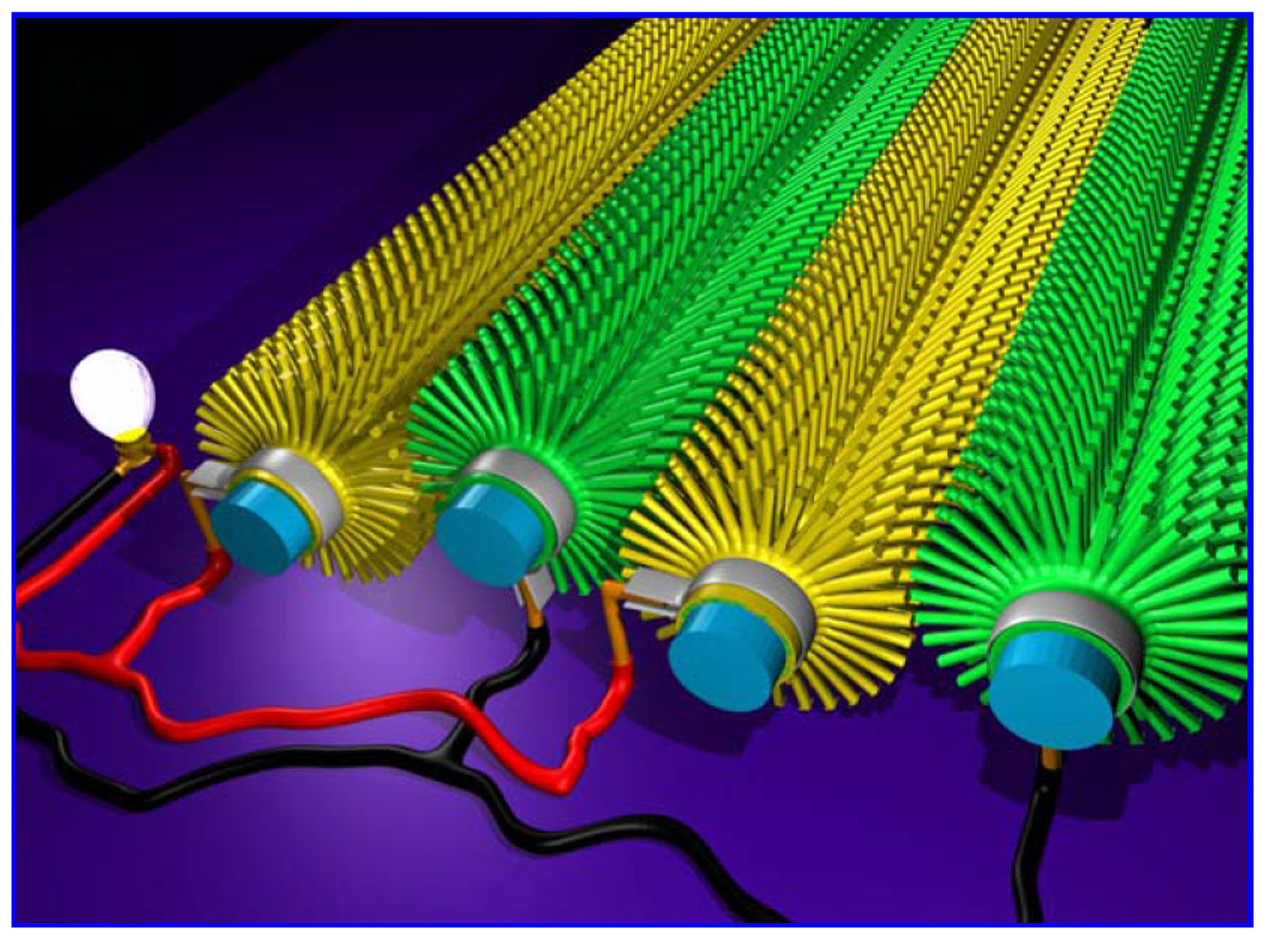 Presented at the American Chemical Society meeting this week, Wang described how these nanowires are piezo-electric, which means every time they are subjected to mechanical stress they produce a current.
Presented at the American Chemical Society meeting this week, Wang described how these nanowires are piezo-electric, which means every time they are subjected to mechanical stress they produce a current.
Now, last year the researchers placed a nanowire generator in a bio-fluid, passed ultrasonic waves through it and the movement produced a small, but detectable direct current. This time the researchers say that making the nanowires out of zinc oxide means they can generate electricity from much lower-frequency movements. And that includes waving your arms about or the effects of a soft breeze on a fabric. The nanogenerators are made by growing these zinc oxide wires radially around conductive fibres.
They say they do need quite a lot of these nanogenerators to make enough current to run something like a mobile phone. But, the zinc oxide nanowires can actually be grown on all sorts of different surfaces such as metals, ceramics or even clothing. And the wires are only 1/25th the diameter of a human hair so theoretically you could incorporate them into a t-shirt - and they'd remain virtually invisible.
What's even more exciting is that these energy materials generate current in air and in water so, as long as the device you want to charge is waterproof, you can give it some juice while you're swimming.
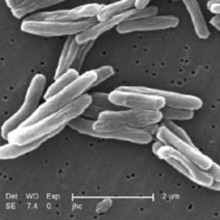
Structural studies shed light on TB treatments
 Tuberculosis, or TB, is a growing problem around the world, and it's on the rise in Western countries as well as in the developing world - it's thought that someone somewhere is being infected with TB every single second. Now researchers in the US have made a discovery that could help scientists to develop new drugs to tackle this growing problem.
Tuberculosis, or TB, is a growing problem around the world, and it's on the rise in Western countries as well as in the developing world - it's thought that someone somewhere is being infected with TB every single second. Now researchers in the US have made a discovery that could help scientists to develop new drugs to tackle this growing problem.
Current TB treatments only tackle actively growing bacteria - the Mycobacterium tuberculosis that cause the disease. But these bugs can also lie low in the body - a property called latency - making them difficult to treat effectively. It's thought that around a third of the world's population has a latent infection with Mycobacterium tuberculosis, and one in ten of these will go on to develop full-blown TB.
Led by Barbara Gerratana at the University of Maryland, the researchers uncovered the molecular structure and mechanism of an enzyme called NAD+ synthetase, which plays an important role in the TB bacterium's energy production by producing a chemical called NAD+.
It's an important drug target, because while humans use many different molecular pathways to produce NAD+, the TB bacteria only use two, and they both rely on NAD+ synthetase. And the enzyme is still needed even if the bacteria are lying low, or latent. So knocking out the action of this enzyme using drugs could be a powerful and specific way to treat TB infections, including latent infections.
The researchers used a technique called X-ray crystallography to find the structure of NAD+ synthetase at an atomic scale. High-energy X-ray beams are fired through crystals made of the enzyme, and the resulting image is analysed by computer to reveal the structure.
Now we have this structure, it's going to be possible to rationally design drugs that specifically fit into crucial parts of the enzyme and block its activity. So it's a big step forward in the fight against TB infection.
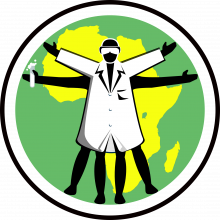
09:59 - South Africa Escapades
South Africa Escapades
with Meera Senthillingham
Diana - This week, Chris, Meera, Ben and Dave are all in Grahamstown in South Africa for "Scifest Africa" while we're stuck here in Cambridge. While the lads were doing explosive science demonstrations for packed houses, Meera has been able to see some of the events going on throughout the week, and she joins us now... Hello, Meera
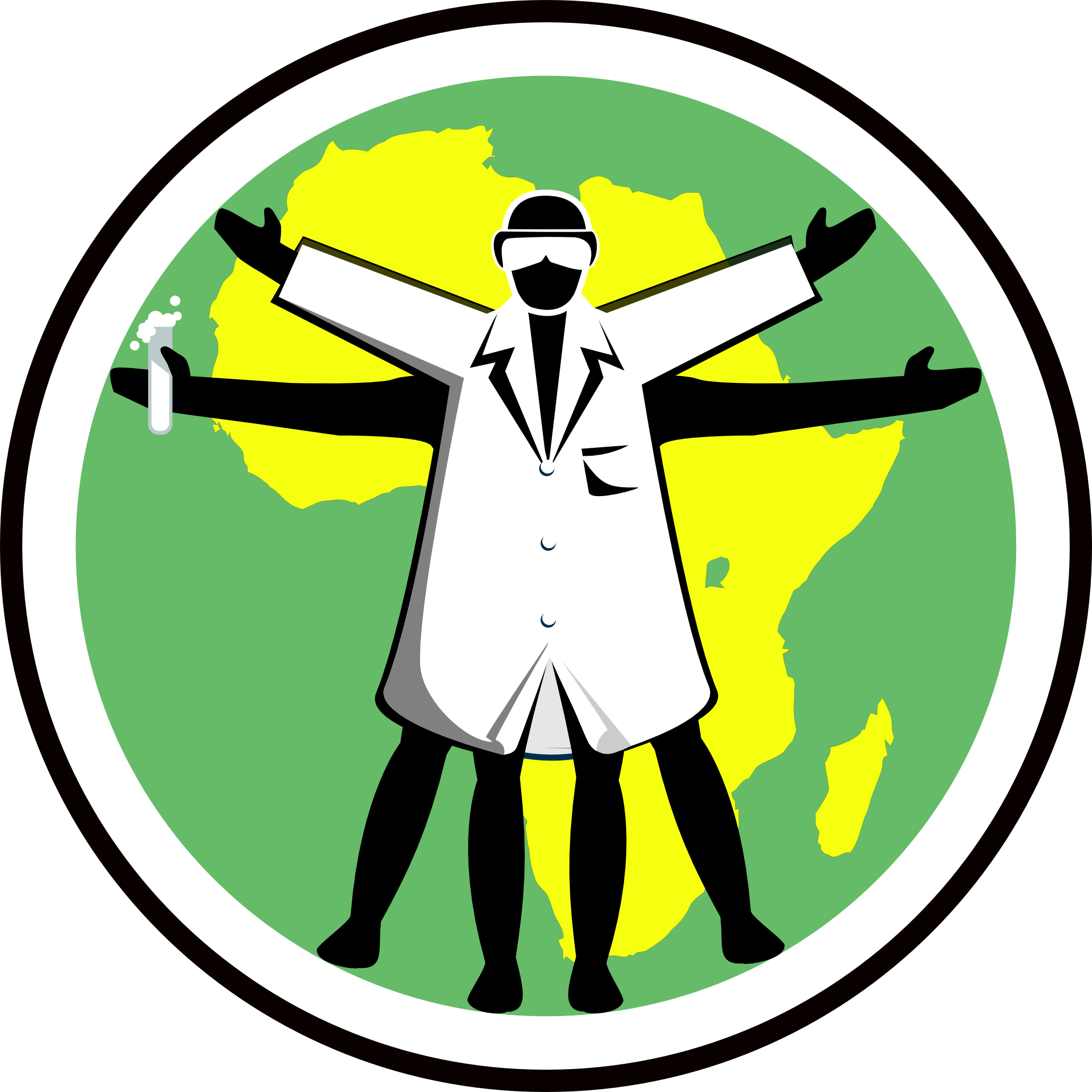 Meera - Hello - I've been practising how to say hello in Afrikaans - do you want to hear it?
Meera - Hello - I've been practising how to say hello in Afrikaans - do you want to hear it?
Diana - Yeah, go on.
Meera - Goeie aand. It's - you know the phlegm sound? It's goeie aand. I'm hoping people listening aren't going to be offended by the way I'm saying it. That's how I've learned to say hello.
Diana - Hello! Tell us about this festival. Just how big is it?
Meera - It's actually really big. It's a lot bigger than I thought it was going to be before I got here. It's in a town called Grahamstown which isn't a particularly large town and it's not really well-known if you don't live in South Africa. It's in the Eastern Cape and it's actually a bit like Cambridge. It's quite a small town, you can walk around everywhere but it's got a really good, prestigious university, Rhodes University as part of it which is hosting a lot of things to do with the festival. It's a small town but they're expecting up to 60,000 visitors to come here just for the science festival and children are travelling from all over the country. They're sitting in buses for like 12 hours and 7 hours just to get here to see all the different scientific activities going on.
Diana - I hear you guys are something of a celebrity down there - what sort of events are on at the festival?
Meera - There's a whole variety of events. Yes, the guys are celebrities. I'm not a celebrity because I'm not in the show with them but they have been asked for their autograph. Also people are asking for pictures with them which is quite interesting. Their show's even a hit here. It's been sold-out the first two shows and so 900 people came to see them do their thing. They've been doing great activities, things like that to do with light. Ben does a brilliant joke at the beginning of the show where he's showing how UV works. He's drawn a skeleton onto his body with a highlighter pen and then they dim down all of the lights and put UV lights on him and then obviously he's then glowing because the UV light is being absorbed and reflected out as visible light. The kids just roar for this - they actually give large rounds of applause just when they see this effect. They're blowing up balloons and exploding bottles of liquid nitrogen. It's going down very well.
Diana - Fantastic. Are we going to hear about any of this next week?
Meera - Yes, I'm sure we're going to hear about what they've been doing as part of their show as well as them doing this particular show I've been roaming around doing interview with various lectures and workshops that are talking place. That's going to be the material for next week's show. Today I actually went to a game reserve to see some very cool animals which will all be part of next week's show. I've been learning how to glass blow and I have been out to an estuary as well to learn about the species that you find in estuaries because they're very interesting ecosystems.
Diana - I hear you had a go on a kudu horn - what was that like?
Meera - It was interesting - I didn't do it very well. The person showing it to me did it a lot better but the whole kudu thing came about because part of my game reserve trip today I managed to witness a cheetah eating a kudu. Apparently you don't get to see that very often - especially as I went at midday which is the worst time of day - completely - to go to a game reserve because everything sleeping and hiding under trees. It did get to see that. The kudu horn is a very interesting sound. I think they used to use it as a good form of communication.
Diana - I'm not jealous at all. Have you made a trip to any of the vineyards yet?
Meera - I think they're mostly in the Western Cape but I have tasted the products of the vineyards, anyway.
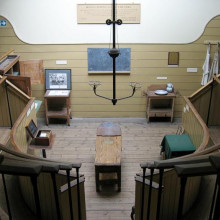
14:04 - Bodysnatching and the Medical History of London
Bodysnatching and the Medical History of London
with Richard Barnett
Kat - This week, we're looking at the history of medicine, and with it's rich history of plagues and epidemics, London seems a good place to start. Tom Bell, our back Yard archaeologist in the Naked Archaeology podcasts, met up with Dr Richard Barnett, from Cambridge University, to find out why he thought London was a fitting subject for his book, "Sick City". He started off with a reading from the book
Richard - In December 1831, John Bishop and Thomas Williams were hanged at Newgate Prison. Their execution was pure spectacle. Several thousand boisterous Londoners thronged the streets around the narrow prison to watch them dance the hemp and jig. Bishop and Williams began their careers as labourers but in the mid 1820s they found a more profitable use for their shovels and picks. They became body snatchers or resurrection men, digging up the recently deceased and hawking their bodies around the medical schools. Body snatching was officially frowned upon as a violation of the sanctity of the grave. In private, however, surgeons and anatomists encouraged their pupils to obtain bodies for themselves in any way they could. In the late eighteenth and early nineteenth century body snatching was big business. A vigorous black economy with a hierarchy as intricate as any modern-day long firm. Certain taverns: The Fortune of War opposite St Bartholomew's Hospital; The Bricklayer's Arms in Lambeth became notorious as the haunt of resurrection gangs. Anyone venturing into the cellar for an illicit pint might find themselves in less lively company than they'd bargained for.
City burial grounds became contested territory as rival gangs fought turf wars over the most lucrative bone yards. In the cemetery of St Sepulchre-Without-Newgate which had the misfortune to lie between Newgate Prison, St Bartholomew's, The Company of Surgeons and The Fortune of War body snatching became so rife that the church elders forced the hospital governors to provide a gatehouse and an unbribeable night-watchman.
Tom - So Richard, it's not a good idea to get buried in this period in London...
Richard - Very bad, it does make you wonder how many graves in the city of London actually have bodies in them.
Tom - Why is London so special in the history of medicine?
Richard - Well, what I tried to do in sick city was to show the way in which the story of London and the story of medicine are so closely intertwined. In a sense, the best way to understand the history of medicine is to look at the history of London and vice versa. So many of the leading medical institutions of this country have been based in London. So many medical theories were developed here. More broadly, of course the history of London's population; the many different groups of people we've had living here bring so many different perspectives on the history of medicine. By looking at the history of London you can understand not only doctors, not only surgeons but also patients, quacks. You can understand how different ethnic groups, different social groups experienced medicine and also how they treated themselves. Folk medicine is a big part of London's history. It's a massive, sprawling - I think for me - irresistible story to try and teach and writ e the history of medicine in London.
Tom - Out of this massive, sprawling, irresistible story of the medical history of London what is your favourite bit that we can still see today?
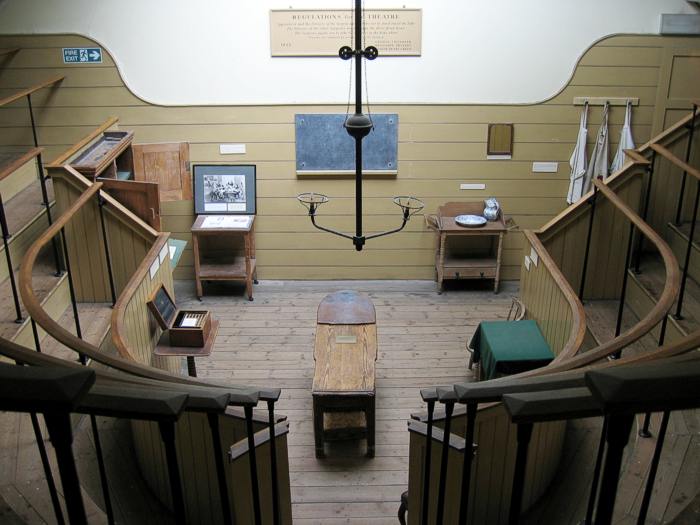 Richard - I think the Old Operating Theatre and Herb Garret is a wonderful place to go and start to learn about the history of medicine. One of the best things about it is, as you probably know the Garret is built above a church. When they were refurbishing the Garret they found that the floor space beneath the operating theatre was filled with sawdust so that blood didn't drip down into the nave of the church during operations. I think my personal favourite would be the church of St Bartholomew at Smithfield, Bart the Great as it's known. This is one of the oldest churches in the City of London. It was built in 1123 and it's really the last remnant of pre-modern monastic medicine. Obviously it's a church these days but I think it gives you some sense of what hospitals before the dissolution of the monasteries in the 13th and 14th centuries were really like. It's wonderfully atmospheric.
Richard - I think the Old Operating Theatre and Herb Garret is a wonderful place to go and start to learn about the history of medicine. One of the best things about it is, as you probably know the Garret is built above a church. When they were refurbishing the Garret they found that the floor space beneath the operating theatre was filled with sawdust so that blood didn't drip down into the nave of the church during operations. I think my personal favourite would be the church of St Bartholomew at Smithfield, Bart the Great as it's known. This is one of the oldest churches in the City of London. It was built in 1123 and it's really the last remnant of pre-modern monastic medicine. Obviously it's a church these days but I think it gives you some sense of what hospitals before the dissolution of the monasteries in the 13th and 14th centuries were really like. It's wonderfully atmospheric.
Tom - You mentioned this date, 1123 which leads me onto my next question - can we call the medicine of 2000 years ago 'medicine?'
Richard - Well, of course if we go back 2000 years in London's history what we think of is the Romans. We can certainly talk about medical practitioners, doctors and surgeons in Roman society, Roman culture. They would have understood that. Just within the history of London there's a rather nice example of sports medicine that the Romans did. During excavations at the site of the Guildhall they uncovered a set of medical implements, closely associated with the gladiatorial games. Doctors were clearly looking after, as it were, the sports cars; the wrestlers of their day. It's a really good question: where does medical practise begin and end? It's very difficult to take our modern notions of medicine, surgery and just simply apply them willy-nilly back to the past. Trepanning is a great example of this. If you look at skulls from the Bronze Age, the Iron Age fairly frequently they'll have holes drilled in them. Some modern surgeons have interpreted this as a kind of surgical procedure. Very often they would do the same sort of thing to relieve pressure on the brain after injury. Of course, we have no idea what these were being done for: whether it was some sort of ritual, whether it was perhaps some sort of punishment or whether indeed it was medicine. It's very difficult to set a start date or set the limits to what is medical practise.
Tom - Who is your favourite character from the history of medicine in London?
Richard - There are so many to choose from. I think my favourite is John St John Long - a 19th century quack. Long was born in Ireland but he came to London in the 1820s to try and be a fashionable portrait painter. He failed at this but he did have extremely good looks and the classic Irish, sort of, silver tongue: he'd kissed the Blarney Stone. He realised that he could become a great success as a quack with a fashionable, young, rich, clientèle. He offered several treatments. Probably the most famous was a massage of a balm, an ointment that he made up from turpentine and egg yolks and various other unattractive ingredients and he'd massage this into the backs and shoulders of attractive rich young women. They liked it very much indeed. Unfortunately in the 1830s, Long was prosecuted for manslaughter after several of his patients died. During his trial the court was filled with these beautiful young women that he'd treated. They cheered him and eventually when he was convicted and fined £250 (an enormous sum of money in the 19th century) they paid it for him by subscription. In a sense he got away scot-free.
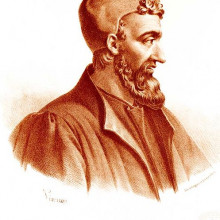
20:55 - Galenus of Pergamon and Roman Medicine
Galenus of Pergamon and Roman Medicine
with Vivian Nutton
Diana - So we know that the Romans were practicing some forms of medicine in the second century AD, but how much did they really understand about the human body? Professor Vivian Nutton studies the history of medicine at University College London, but one particular physician he works on is Galenus of Pergamon. Vivian, when and where was Galenus practising?
Vivian - Galen was born in 129AD in the Greek speaking area of what is now Turkey. He trained at Alexandria in Egypt and then he spent 60 years or more of his life in Rome as a practitioner, as a doctor to a succession of Roman emperors. He's really a Roman doctor.
Diana - And he was quite the anatomist as well so how did he actually look at the anatomy of the human body?
Vivian - He believed that anatomy was the key to medicine. He himself had never dissected human specimens successively. What he did was he took - he was a surgeon so he had surgical training but he believed in practising surgery on animals to look and see how a living body worked. He used skeletons. He used his surgical practice and he used experiments on animals.
Diana - Was he actually allowed to look at human bodies in the second century AD?
Vivian - No, not really. There's a taboo rather than a legal prohibition. He could certainly see skeletons and he advised people to take the best opportunity they could to look at a body. For instance, wander over a battlefield and poke around in corpses or look at somebody hanging from a gibbet.
Diana - Yuk. You've managed to locate the document that describes some of his work. Where did you find it and what does it add to the story?
Vivian - Well I've been working on a text which has been almost forgotten for five hundred years. It's called 'On problematical movements of the body' in which Galen tries to understand how the body works which is the relationship between the brain and other parts of the body. He asks all the right questions and comes up with all the wrong answers.
Diana - And what exactly are those wrong answers?
Vivian - He believes very strongly that the brain, if you like, controls things. Many people believe the brain worked through nerves. He then said well, possibly it doesn't always work through nerves. Sometimes, he says for the tongue: it is filled with air. When you stick your tongue out the brain sends signals that pump air into the tongue. Alternatively, he said each part of the body may in some way communicate directly like a living being with the brain. He sees each part of the body as having, in a sense, life within it and an almost independent existence that can talk to the brain and chat with the brain. If the brain thinks of something that part of the body immediately responds.
Diana - If each part of the body has effectively its own soul - and I feel a bit like that sometimes I have to say - then how did Galenus describe our control over it?
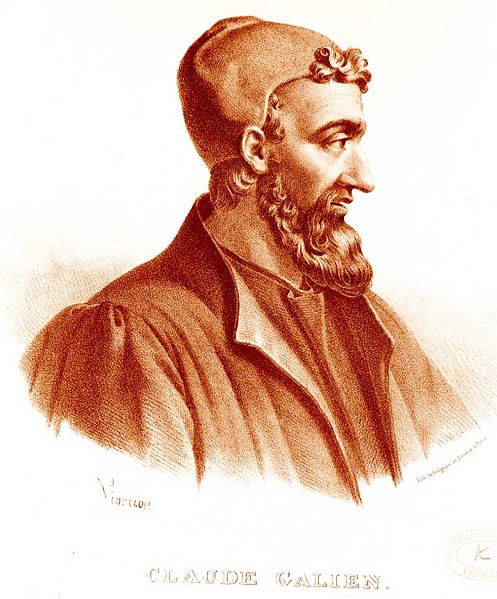 Vivian - he believed that sometimes the brain sometimes directly controls things through nerves. He did enormous amounts of experiments on nerves. Effectively he discovered many new pathways of the nerves. For him the brain and nerves work together. At times this thing doesn't quite work. Certainly it isn't a conscious decision and one of the things he talks about in the book is the relationship between consciousness and activity. Do we do things because we want to do - because we decide to do or does imagination play a role?
Vivian - he believed that sometimes the brain sometimes directly controls things through nerves. He did enormous amounts of experiments on nerves. Effectively he discovered many new pathways of the nerves. For him the brain and nerves work together. At times this thing doesn't quite work. Certainly it isn't a conscious decision and one of the things he talks about in the book is the relationship between consciousness and activity. Do we do things because we want to do - because we decide to do or does imagination play a role?
Diana - And how did his findings feed into practical medicine of today - or even medieval medicine?
Vivian - his views became dominant in medieval medicine, except that the medieval people, on the whole, took his conclusions without his experimental attitude. He believed in experimental dissection. The sixteenth century re-discovered the merits of dissection as the very basis for human anatomy. For a long while Galen's views, taken up by his later followers dominated but he didn't believe in the circulation of blood. Gradually his ideas fell out of fashion. In one sense they don't contribute but in another they do because they stimulated lots of people to think about anatomy and the role of anatomy in practical medicine.
Diana - What else can we learn from his approach to medicine?
Vivian - What one can learn is two things: the first is that to be a doctor you've got to observe and he's an enormously powerful observer. The second thing is that he says if you observe you also need to think. That is a powerful message that he gives and very important for any doctor today: linking observation and thinking.
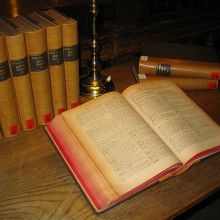
26:29 - Do manuscripts drift like DNA?
Do manuscripts drift like DNA?
with Chris Howe
Kat - DNA technology has revolutionised the world. We can use it to trace relatives, study how populations evolved and migrated, and even to answer questions about where life came from in the first place. But there's also been spin off for literary historians too, thanks to the work of scientists at Cambridge University's Biochemistry Department. They've taken computer programmes designed to compare DNA sequences and developed a way to use them, instead, to compare the words and spellings of ancient texts like the Canterbury Tales and even the Bible. What this can reveal is who copied who as versions of these writings were passed down from one generation to the next. Chris Smith spoke to Chris Howe:
Chris H - We're interested in the parallels of how scribes copied manuscripts of medieval times and made mistakes, and then incorporated those mistakes as they made more copies of the manuscripts and how DNA gets copied and makes mistakes in the copying process that scientists call mutations. Those mutations get propagated as the DNA gets copied in turn.
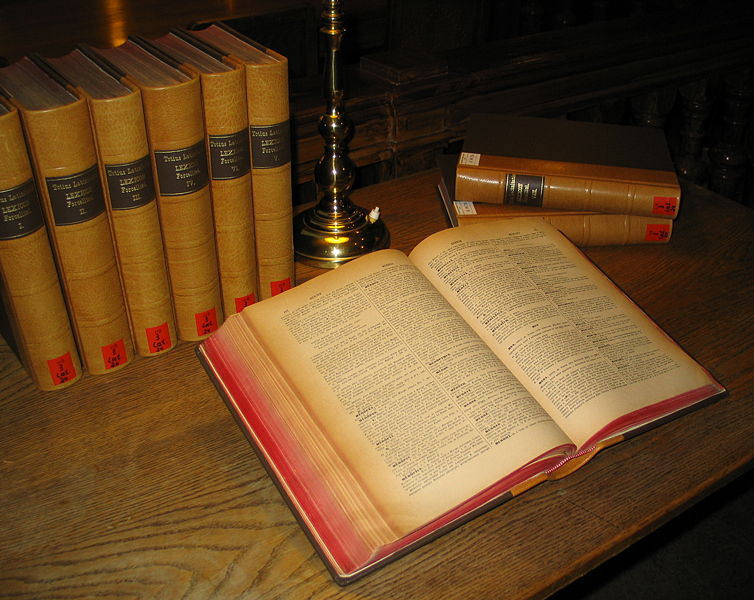 Chris - So what you're saying is you could use the same tools that we've built to understand how DNA changes to understand how mistakes crept into literature going back for hundreds, if not thousands of years?
Chris - So what you're saying is you could use the same tools that we've built to understand how DNA changes to understand how mistakes crept into literature going back for hundreds, if not thousands of years?
Chris H - That's the approach, yes. We have a lot of computer programmes that allow us to look at DNA sequences from different organisms and work out what we call an evolutionary tree. Basically a kind of family tree of those organisms. What we're trying to do is to apply those computer programmes to look at different versions of a text to build up a family tree, as it were, of text.
Chris - So talk us through it. How would you start, what texts would you do and how would you convert the text into something the computer programme could understand? In other words, so it could think of the text as a bit of DNA.
Chris H - The computer programmes, as you say, are used to looking at bits of DNA. They're just a string of characters, which in the case of DNA, can be one of four possibilities. What we need to do is to take a piece of text and code it as though it looks like a string of characters. Basically, what we do is take each word and represent it by a character, as it were, in DNA.
Chris - What's the programme looking for in order to work out how the text has changed over time then?
Chris H - It's basically looking for changes that are shared by two or more organisms if we're dealing with DNA, manuscripts if we're dealing with texts. Then it assumes that if those two organisms have a change that the others don't have that they're related to the exclusion of the others. It can build up evolutionary relationships that way.
Chris - If I'm a scribe and I'm copying one ancient piece of text and I make a mistake or I put a certain combination of words together and then someone else, you, come along and copy my version you'd see the same combinations of wordings together. That's what your programme will be picking up, that relationship?
Chris H - Absolutely. That's how it works.
Chris - What have you been looking at in terms of real text and real analysis?
Chris H - The first experiments we did were a few years ago now on the Canterbury Tales, and in particular on the prologue to the Wife of Bath tale. That worked very well. The conclusions that we came to using our computer programme was really very similar to the kind of accepted conclusions that people had come to for years in the study of those texts.
Chris - That validated the method. What did you actually see? What was it proving?
Chris H - It's basically showing which manuscripts were copied from the same earlier version. That's something that's quite interesting for people studying texts, to know which versions of a text were copied from a same earlier version, maybe were copied in the same place or were copied by the same scribe. Since then we've moved on to different texts. We've done some work on the New Testament which is interesting. Most recently, we've worked on a political philosophy treatise by Dante (of Inferno fame), called Monarchia. Again, what happened there was were using data provided by people who'd been studying manuscripts for a long period of time and who had their own conclusions about the relationships between them and trying to test out our methods by using those data in our programmes. We didn't know at the outset what they were thing they might find or not find. We didn't even know what the text was. We were just told, "No, go away and see what you can find." We managed to work out relationships between different forms of text and then went back to the experts who'd been working on it and said, "Okay, this is what we found." They said: "That's amazing. That's exactly what the scholars have thought." Except, we can come to those conclusions very quickly and save the manuscripts scholars a lot of time, a lot of backs of envelopes in doing their own calculations.
Chris - What about spelling mistakes? One of the things that's very noticeable if you read old English is that you might see sulphur written with an 'f.' It might be written 'ph.' There must be loads of examples like that. Can your programme get round that?
Chris H - That's a very good point. For quite a long time, spelling was quite fluid. Because, therefore a scribe making their own copy might change the spelling in the same way in many different places in the manuscript we actually, for safety's sake, omit spelling changes from that kind of analysis. Similarly dialect words we omit as well. For example, a scribe working in Scotland would probably change 'church' to 'kirk' and we tend to omit those because two scribes in Scotland might therefore independently make the same changes.
Chris - Have you got people queueing up, all round the world to use this now? It sounds like an amazing tool. It could save so much time.
Chris H - People either love us or hate us, I think! There are some people who have said, yes we think this is a really powerful tool and we'd like to learn how to use it. Equally there are people who say this will never work, it can't possibly replace conventional scholarship. I think I would agree with them. It's actually not something that we would claim would replace conventional scholarship;. You should only follow a computer programme as far as an intellectual precipice, I always say, and not beyond.
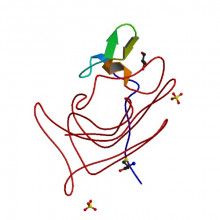
32:58 - Making Modern Medical History
Making Modern Medical History
with Tilli Tansey
Kat - Modern medicine tends to revolve around drugs, but pharmaceutical companies are a relatively new invention (certainly compared to the Romans or Chaucer!). Professor Tilli Tansey, who works with Vivian Nutton at UCL, studies the more recent history of medicine. Hi, Tilli!
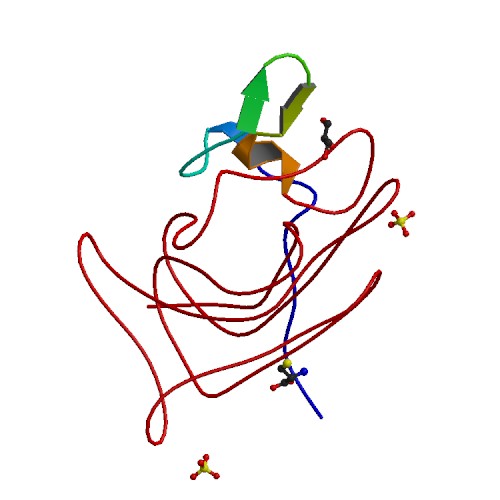 Tilli - Hi.
Tilli - Hi.
Kat - Let's start with looking at pharmaceutical companies which seems to be a very modern invention. What can you tell us about where these kinds of companies came from; about their history and how they've contributed to the medicine we have today?
Tilli - Modern pharmaceutical companies as we would recognise them - research-based industrial enterprises really started in the latter part of the nineteenth century. They came very largely from the German chemical industry and in this country the chemical industry was one of the models. Old fashioned chemical manufacturers were one of the models. Also a big influence was the beginning of biological therapies such as serum antitoxins which required laboratories, which required animals to be used in animal experiments and scientists - properly trained scientists who'd be doing the research work. That was really when what we would recognise as the pharmaceutical industry started developing in this country.
Kat - What about the regulation of these kinds of industries? You think in theory there's nothing to stop anyone saying, "I shall flog this, it makes you better." How about the history of regulation and protection against quackery?
Tilli - It wasn't just theory it was also in practise. The people could just think "we'll make this and flog it." Really well into the twentieth century it was happening. Suddenly in Britain quack sellers would go around market places, selling compounds. Often they would be long-gone if there were any problems. Even quite well-known brands were often contaminated, sometimes deliberately so. There was very little regulation. The main regulation - the poisons act and then simple marketing regulations like weights and measures. It wasn't until the 1920s, 1926 that there was the beginnings of regulations in this country with the Therapeutic Substances Act which just applied to four particular kinds of preparations: three biological preparations and Salvarsan, which was a medicine against syphilis - an arsenic compound. After that it wasn't until 1968 that the medicines act was passed in this country which came into being in 1971 where there was really formal legislation for all drugs. Before then there'd just been perhaps one or two: for example, penicillin. There was particular regulations about penicillin. Otherwise there was no whole-sale regulation in this country.
Kat - I guess, with the rise of the internet we're seeing almost again an alternative medicine industry springing up that is very difficult to regulate and counter to pharmaceutical companies and their tightly-regulated research.
Tilli - Yes, and it varies of course with pharmaceutical industries that have become global industries. Regulations differ from continent to continent, from country to country. International regulation is a big issue.
Kat - What do you think have been the main drivers of change in modern medicine? How have we gone from bloodletting and leeches to the very highly specialised technical medicine that we have today and lots and lots of different drugs that we have.
Tilli - You have to remember that medicine is not just drugs, although obviously they are the most obvious therapeutics that people think about. During the twentieth century what has really happened is a big explosion in medical knowledge, medical education becoming much more scientific-based, explosion of laboratory research which has then fed into clinical research and into clinical applications. That has really been the story throughout the twentieth century.
Kat - One of the things from cancer research - one of the things I find fascinating is how serendipity has led to a lot of really important discoveries so things like the discovery of platinum drugs for chemotherapy or the discovery of nitrogen mustards which were poison gas in the First World War and then we discovered that they were actually quite powerful ways to treat things like blood cancers and lymphomas. What are your favourite serendipitous discoveries?
Tilli - You've just mentioned one of them: platinum compounds. I think the platinum compounds story for chemotherapy really started from a chemist working in a lab in Michigan, looking at the effects of platinum compounds on cell growth/on microbial growth. From that going through to microbiologists with cell biologists to oncologists, looking at how platinum compounds, if they affected the growth of normal organisms, what would they do to abnormal growth, i.e. a cancer cell? Then the development - and this was particularly in this country - the development of platinum compounds and then some chemical testing. Platinum compounds were found to be almost wonder drugs because they did affect the solid tumours like tumours of the ovary and testes for which there were very little treatments beforehand. The big problem with the platinum compounds (and it had been a recognised problem with other chemotherapy and radiotherapy) where the platinum compounds in particular caused nausea and vomiting. So much so that even thought they were the only drugs for these foul cancers patients refused to take them because they got so sick. As an added little quirk of research and another serendipitous leap was that pharmacologists became particularly interested in developing anti-nausea and vomiting drugs because of the platinum compounds. Pharmacologists started working on what was then known as 5-HT receptor antagonists which really can counteract the nausea and vomiting in platinum compounds and also led to the development of drugs that could be used against other chemotherapy adverse effects. I think it's a wonderful story and it starts with a chemist interested in platinum compounds in a lab in Michigan.
Kat - It's fantastic and I love the way that in big medical discoveries - they do have to involve so many people over so long. You think what the Eureka moment must have been. It never seems like a Eureka moment at the time.
Tilli - Exactly and you've raised another important point: so many people. Modern medicine is a big scene. There are numerous players in it unlike the Roman medicine that my colleague, Vivian Nutton was talking about, with major doctors. Doctors played their part but there are scientists, technicians, a whole range of people now involved in the process of medical research.
Kat - It's certainly something that Cancer Research UK - the organisation I work for - we're trying to track down how we've discovered things in the past and tried to trace the relationships between people. Tell us about some of the ways that you're trying to gather together doctors and scientists to actually trace medical history as it's happening.
Tilli - What I do is, in my own work, I do quite a lot of tracing records and talking to people on a one-to-one basis. What I'm particularly developed at UCL is a process called a Witness Seminar. We get together a group of people who've been involved in particular discoveries or debates to actually ask them to sit around together to talk about what happened, why, what perhaps went wrong, some of the serendipity which we've talked about - to discuss this and to have the whole meting recorded. It's then transcribed and edited. In that way we're actually bringing together the whole group of people, sometimes who've never met each other to talk about particular advances and debates. The famous scientist, Sir Peter Medawar, Nobel Laureate, once wrote famously that the scientific paper is a fraud. We could chart the history of, say, the discovery of platinum compounds by looking at all the scientific papers but actually when you get people together they say that the scientific paper's so structured you can't get the stories behind the science. When you get people together it's like an open peer review. They can all talk together. They can disagree, they can stimulate memories and they can tell us about what happened, why things happened and the sub-stories that don't make it into the formal scientific literature.
Kat - I always think those are the most fascinating stories in science: the personal stories of how someone was in the lab late and then something weird happened and then it turned into an interesting discovery. What are the most interesting stories that have turned out from your Witness Seminars?
Tilli - Certainly, as we've just said the platinum compounds because we did actually get all those people we talked about - from the chemist all the way up to the pharmacologist developing anti-emetics in one room. They were quite stunned by it because they had never done that together. Another one which was a particular favourite was haemophilia, looking at changes in the treatment of haemophilia: particularly after the Second World War and how really it as people working in very primitive situations, almost huts at the back of labs in Oxford, working out the blood chemistry and how clotting factors evolved. This explained why some people don't clot when particular factors are not available. Then actually developing and manufacturing the factor to give to haemophiliacs. Of particular interest from that project which had never occurred to me and indeed most of the people at the meeting - it hadn't occurred to them - the importance of home freezers. When people had managed to manufacture factor VIII which is the commonest lesion for haemophiliacs, the commonest missing material. Factor VIII was frozen and then given to patients so they had to go to hospitals and the patients-haemophiliacs were mainly children. There was a great deal of disruption with schooling and they were labelled as invalids and had very disrupted lives. A very influential lady physician at the Royal Free Hospital, Katharine Dormandy, Katherine paid for home freezers - this was in the mid-60s when home freezers were very rare. If patients had a home freezer and if their freezer had an alarm on it - if the electricity supply was disrupted patients knew that their precipitate that was in the freezer was going to be damaged. If they had those freezers they could self-medicate. They didn't have to go to hospital. This made quite a revolution so they could live a normal life. It was almost a de-medicalisation of a condition and children could have normal schoolings. That made an enormous difference to patients' lives.
- And you can read more, download about the Wellcome Witness Seminars here:
http://www.ucl.ac.uk/histmed/publications/wellcome_witnesses_c20th_med

44:10 - Why are Aussie snakes so toxic?
Why are Aussie snakes so toxic?
We put this to Wolfgang Wüster, University of Wales and Bangor. The idea that Australian venomous snakes are more toxic than those anywhere else is, to a large extent, a myth which started out with a study that was published approximately thirty years ago. They took 25 different snake venoms and showed that the top ten of those were Australian. It only included five non-Australian snakes so it's rather like the American baseball World Series: you can't lose if you don't include the competition. In reality the two snakes in the world with the most toxic venoms drop for drop are in fact Australian. Immediately after that when you look at the table of most toxic venoms you start having a large number of other snakes coming in. A large number of Australian venomous snakes are actually not spectacular at all in their potency of their venom. There's nothing intrinsic about Australian snakes being particularly toxic. The amazing thing is that the snake with the most toxic venom in the world - the inland Taipan has never actually killed anyone. Some snakes live in remote areas and in places where there is no medical treatment and other snakes live in areas which either are very remote and people don't go to so they don't bite anyone or there is good anti-venom and good treatment available. If you're bitten in Australia a flying doctor comes and picks you up and you go to a hospital and 99.5% of cases everything's going to be just fine. If you get bitten in West Africa then there is no anti-venom, there is no hospital that can treat you and you slowly bleed to death from a snake that has a fraction of the killing power.
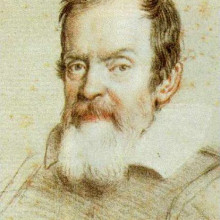
47:17 - Why Galileo lost his sight
Why Galileo lost his sight
with Peter Watson
Diana - Now, we've looked back at medicine through history, but we can also use modern medicine to try to diagnose historical people's illnesses. This is exactly what happened when Peter Watson, an ophthalmologist, noticed that portraits of Galileo showed him with one eye pushed outwards and downwards. We know that Galileo suffered from a series of unknown eye complaints, and eventually lost his sight, but modern evidence may shed light on what these conditions were. Here's Peter Watson...
Peter - I was writing a book on scleral disease and I read a paper which suggested that Galileo might have had scleritis. I looked at the paper. I wasn't totally convinced but I realised there was a portrait of Galileo in the Fitzwilliam museum and the archivist showed me the picture. When I looked at it, it was quite clear that he didn't have scleral inflamation but he did have a very unusual condition which is known as mucocele of the frontal sinus. This is a condition which is caused by a congenital anomaly of the frontal sinus. You don't actually drain the muscus form the frontal sinus and it accumulates. This pushes the eyeball downwards and outwards. In the portrait he has had to lift his eyebrow up to keep his eye open. This eye is quite obviously displaced from the other one.
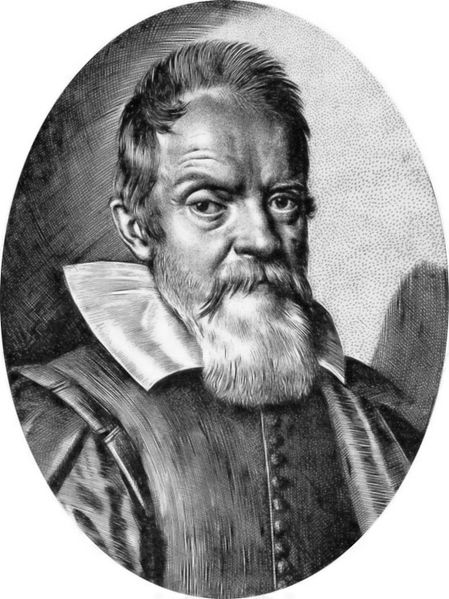 Diana - Looking at the portrait it looks like he's raising his eyebrow as us, quite suggestively. How do we know it's an accurate portrait?
Diana - Looking at the portrait it looks like he's raising his eyebrow as us, quite suggestively. How do we know it's an accurate portrait?
Peter - the portrait was done in 1624 by a person called Leoni. He and his father gave a lot of portraits which are 'alla machia', which means 'as it is' or 'to show the personality.' they were well-known for doing just exactly that. This was almost certainly correct. The original sketches are also extant - one in the Louvre which show exactly the same situation as we have here. What needed to be done next was to find out whether this anomaly was present before these portraits were taken which was when he was 64. indeed, the portraits prior to that do show that particular anomaly.
Diana - Could this picture be indicative of any eye conditions other than a mucocele or a cyst in the frontal sinus?
Peter - You accept it, it's totally characteristic. There really isn't another condition that looks like it! If you do look at a portrait of him when he was 34 it does show him with an anomaly of the upper part of his right eyelid and the eyebrow. I think it was part of a congenital anomaly.
Diana - And as we look through the portraits through the years you can actually see it getting worse until that one when he was 64. Some people have argued that perhaps he spent far too much time looking through a telescope at the sun. Why do you think this wasn't the case?
Peter - If he'd had solar retinopathy he would have been centrally blind. The sun's rays would burn the macular so he wouldn't have been able to see centrally. This clearly was not the case. When he looked at the sun he used a reflective technique for doing so. He was the first person to describe sunspots. These were all done by shadow drawings which were extraordinarily accurate.
Diana - How could a mucocele affect Galileo's sight?
Peter - Well, none of the conditions we've talked about at the moment have any reltionship to blindness and he went totally blind. The story's quite interesting in that he was brought up mostly by his father. He was sent to a monastery called Vallombrosa. While he was there he developed an extremely severe opthalmia for which he was actually removed from the monastery. He then recovered form that and was perfectly alright until his mid-thirties. He then had a lunch with a friend of his when he was working in Padua. The three of them went down into a cool room in the middle of the Summer to have a siesta. This room was cooled by a waterfall. When they all woke up they were all extremely ill. One man died more or less straight away, Another one died three weeks later, totally deaf. Galileo was deaf in one ear for a little while but actually recovered. Thereafter he complained of extreme pain in his joints, bloody discharge and generally unwell. He used to have bouts of this which were so severe that he was stuck in bed for a very long time. In fact on one occasion when there were three comets to look at he couldn't even get out of bed to look at them. They had to be described to him so he must have been extremely ill. Well, all of this is enough to set up, if you have an inflammation in the eye as a result of immunological disease, then this would certainly do it. One of these is ulcerative colitis or Reiter's disease or Crohn's disease: all of which have specific HLA types.
Diana - So it may have been that, in addition to the swelling above his eye his own immune system was eventually responsible for his blindness. Are there any more clues?
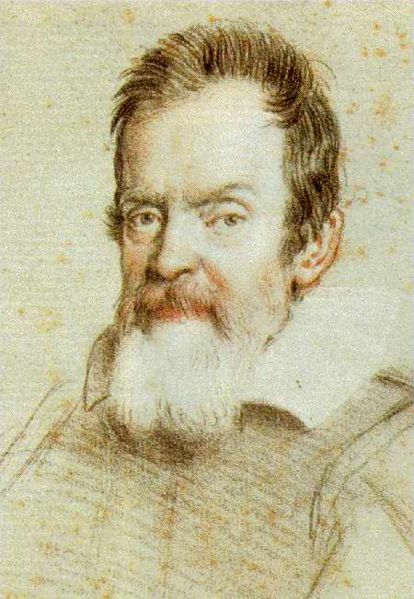 Peter - Well, he then described a condition where he saw halos round the light. This is really as an aside in a book on optics. He described this halo when he looked at a candle and it expanded and contracted according to the condition of his eye. He recognises that this was indeed due to the swelling of the front of his eye - his cornea. This, of course, is a glaucomatous halo. But if you look carefully at the history thereafter you find that right to the very end of his life - even when one eye was extremely bad he was still able to observe through the telescope. In fact he described the thing called the libations of the moon where the moon moves slightly one way then another within the last few months of his sight. Clearly he could see accurately right down the middle of his vision, even though he had no peripheral vision. This is much more like an angle closure glaucoma. We now have a problem. We have a possibility of him having a uveitic glaucoma or a primary glaucoma, that's to say just simply due to a disease of his eye. The only way to find this out is to find out whether he has a specific HLA type which could have been part of his sero-negative disease.
Peter - Well, he then described a condition where he saw halos round the light. This is really as an aside in a book on optics. He described this halo when he looked at a candle and it expanded and contracted according to the condition of his eye. He recognises that this was indeed due to the swelling of the front of his eye - his cornea. This, of course, is a glaucomatous halo. But if you look carefully at the history thereafter you find that right to the very end of his life - even when one eye was extremely bad he was still able to observe through the telescope. In fact he described the thing called the libations of the moon where the moon moves slightly one way then another within the last few months of his sight. Clearly he could see accurately right down the middle of his vision, even though he had no peripheral vision. This is much more like an angle closure glaucoma. We now have a problem. We have a possibility of him having a uveitic glaucoma or a primary glaucoma, that's to say just simply due to a disease of his eye. The only way to find this out is to find out whether he has a specific HLA type which could have been part of his sero-negative disease.
Diana - The glaucoma could have resulted from an auto-immune, inflammatory disease or it could have come from an infection. The HLA - human leukocyte antigen region - is a stack of genes that code for immune responses. If you can find that you'll know why Galileo lost his sight!
Peter - That's what we'd like to do. I'm not quite sure of the situation at the present time. As I understand it, the Vatican has given permission for his body to be re-examined in the tomb in Santa Croce. Galileo himself has lost two pieces of bone already, one of which is in the museum in Florence and the other one in the museum in Padua. Neither of these show any arthritic changes which might be due to inflammatory disease. So it's yet another feature which makes me feel that it is an angle-closure glaucoma and not a secondary glaucoma. DNA taken from the body will enable us to find out.
- Previous Artificial DNA and Treating TB
- Next Computer Intelligence










Comments
Add a comment